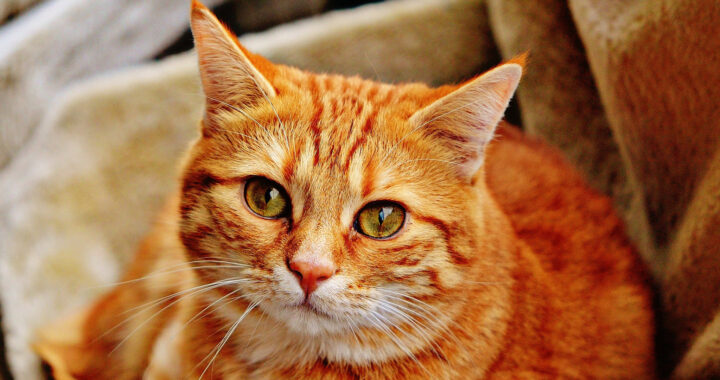Several domestic cats or Felis catus exhibit a unique orange coat color that is especially interesting for researchers because it is sex-linked and occurs predominantly in male cats. Note that several color patterns, particularly the patchy red, orange, and yellow seen in calico and tortoiseshell cats, have long served as a visual cue of random X-chromosome inactivation in females.
However, unlike other pigment mutations that affect hair and coat color in mammals and are often linked to genes shared across species, the sex-linked orange gene in cats had no known homolog in other animals, making it an unusual case. For over a century, scientists knew it was sex-linked and likely on the X chromosome, but its molecular mechanism remained a mystery.
Two independent research teams have identified and analyzed the genetic mutation responsible for this fur color. One team was headed by Hiro Sasaki at Kyushu University in Japan, and the other by Christopher Bryan Kaelin at Stanford University. Both research teams shared their findings in separate studies published on 15 May 2025 in the journal Current Biology.
Meowtation: How One Mutation in the Arhgap36 Gene Locus Made Orange Cats Unique Among Mammals
Findings
About 80 percent of orange cats are male. This is because male cats need only one copy of the orange mutation on their X chromosome while females would need two—which is statically less likely to occur. Female cats with only one X chromosome carrying the mutation exhibit a calico or tortoiseshell coat pattern. These patterns arise from random inactivation of one X chromosome in each cell. Two teams, from Stanford University and Kyushu University, independently identified the genetic cause behind the orange color.
The researchers discovered that the orange coat color in cats is caused by a 5-kilobase deletion in the DNA that affects gene regulation. Specific findings indicated that this deletion results in the abnormal or ectopic and melanocyte-specific expression of a gene called Rho GTPase Activating Protein 36 or Arhgap36. This gene is usually active in neuroendocrine tissues of mammals and not in pigment-producing cells called melanocytes.
In other words, the deletion is a mutation that activates the Arhgap36 gene in melanocytes where it is normally not active. This suppresses Protein Kinase A or PKA enzyme activity to shift pigment production toward orange-colored pheomelanin. PKA involved in cell signaling pathways and plays a central role in how cells respond to hormones and other external signals. The seemingly rogue expression of the gene inhibits a pathway crucial to black-to-brown or eumelanin pigment production. This explains the orange hue.
Moreover
Orange cats are considered mutants in the genetic sense because their distinctive orange fur is caused by a specific 5-kilobase deletion on the X chromosome that leads to the ectopic expression of the Arhgap36 gene in pigment-producing cells called melanocytes. Remember that this gene is normally expressed in neuroendocrine tissues and not in melanocytes. However, in orange cats, the mutation in their X chromosome misplaces its activity, thus causing it to suppress PKA activity and interfere with the melanin production pathway.
In other mammals, like humans, foxes, and golden retrievers, orange or red hair is caused by mutations in the MC1R gene. These mutations directly disrupt the ability to stimulate melanin production via the cyclic AMP signaling pathway. However, in orange cats, they have a fully functional MC1R gene and cyclic AMP signaling. Moreover, orange or red coat color is not sex-linked in most mammals, unlike in domestic cats.
The two studies do not reveal when the mutation first emerged. However, according to Kaelin, it is likely ancient and possibly dates back to the early domestication of cats. There are 12th-century paintings depicting calico cats. Finding out when the mutation first appeared or whether or not it is ancient requires finding evidence of ancient orange cats. The research team at Kyushu University is keen to explore its origin. This might involve an analysis of various ancient Egyptian cat paintings or DNA analyses of mummified cats.
Implications
The aforementioned studies uncover the precise genetic mechanism behind the sex-linked orange coat in cats and specifically show that a regulatory mutation leads to the misexpression of a gene not typically involved in pigmentation. Both show how minor DNA changes can have visible impacts and link wider questions in genetics, evolution, and development. This offers insight into evolution at the molecular level. The orange coat mutation is not just a quirk of domestic cats. It serves as a case study of how gene regulation affects phenotype.
It is also worth noting that the research incorporated community science. The researchers collected genetic samples from hundreds of domestic cats. These samples were submitted by cat owners who volunteered to participate in the research. Participants also provided information about the color and sex of their cats. Veterinarians and clinics also helped by submitting samples from cats that came in for check-ups or procedures.
The Arhgap36 gene previously studied mainly in cancer biology and neuroendocrine systems, is shown for the first time to play a role in pigment cells. Hence, because the research showcased that it can inhibit PKA activity, it has now been identified as a regulator of pigmentation pathways. A new molecular step in the pigmentation pathway has been introduced. This could help future researchers better understand the pigmentation process, pigmentation disorders, and mechanisms in melanoma in which pigment cells become cancerous.
FURTHER READINGS AND REFERENCES
- Kaelin, C. B., McGowan, K. A., Trotman, J. C., Koroma, D. C., David, V. A., Menotti-Raymond, M., Graff, E. C., Schmidt-Küntzel, A., Oancea, E., and Barsh, G. S. 2025. “Molecular and Genetic Characterization of Sex-Linked Orange Coat Color in the Domestic Cat. Current Biology. DOI: 1016/j.cub.2025.04.055
- Toh, H., Au Yeung, W. K., Unoki, M., Matsumoto, Y., Miki, Y., Matsumura, Y., Baba, Y., Sado, T., Nakamura, Y., Matsuda, M., and Sasaki, H. 2025. “A deletion at the X-linked ARHGAP36 Gene Locus is Associated with the Orange Coloration of Tortoiseshell and Calico Cats. Current Biology. DOI: 1016/j.cub.2025.03.075
